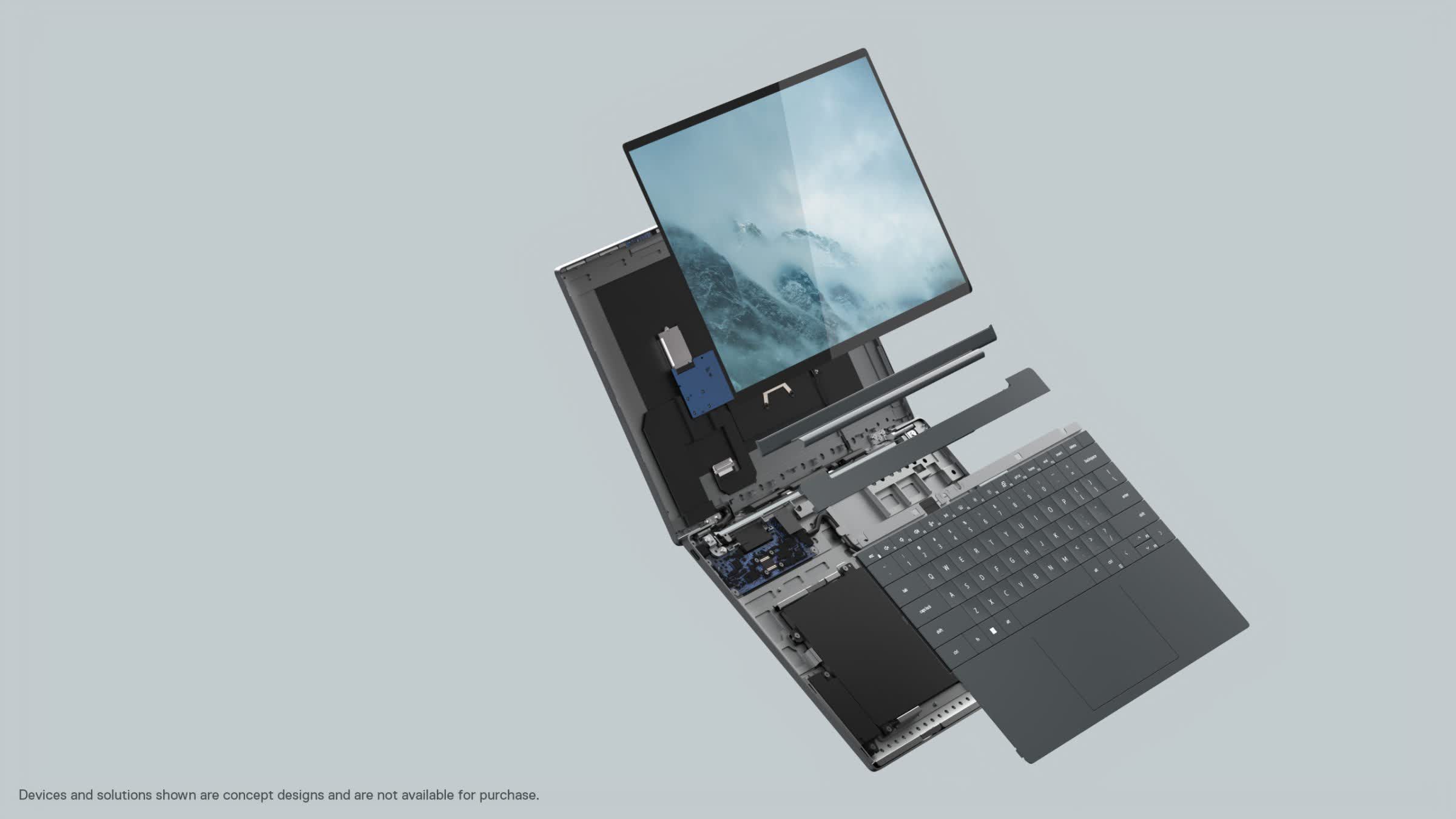Forward-looking: Dell’s design team has come up with ‘Concept Luna,’ a proof-of-concept laptop that’s easy to repair and maintain, features reusable parts, and is meant to drastically reduce the overall carbon footprint compared to present-day laptop designs. The sleek, aluminum-made, fanless prototype uses smaller, efficient components inside and relies less on screws for better repairability.
Dell has used its Latitude 7300 Anniversary Edition laptop as the benchmark for Concept Luna, noting that the company could achieve up to 50 percent reduction in its overall carbon footprint if it were to implement the design decisions applied in the Concept Luna prototype.
One of the main changes in the exercise involves using smaller internal components and fewer of them. The motherboard has been shrunk by 75 percent, while the component count has been reduced by 20 percent. Dell has also updated the internal layout by placing the motherboard in the top cover of the laptop for passive cooling. This negates the need for a fan, as there’s better separation from the heat-generating battery in the base.

In terms of repairability, Dell notes the use of just four screws (a 10x reduction) for easier and quicker access to internal components. Hardware like the display and unified keyboard assembly uses keystones to lock in place instead of adhesives, and there are fewer connections to handle inside when doing repairs.
Speaking to The Verge, Dell’s design strategist Drew Tosh said that recycling and reusability were the focal points for Concept Luna. He also noted that these design ideas still required validation for mass production. To that end, Tosh estimates many of these concepts to be implemented in Dell’s consumer laptops by 2030.
https://www.techspot.com/news/92638-dell-concept-luna-focuses-sustainable-laptop-design.html